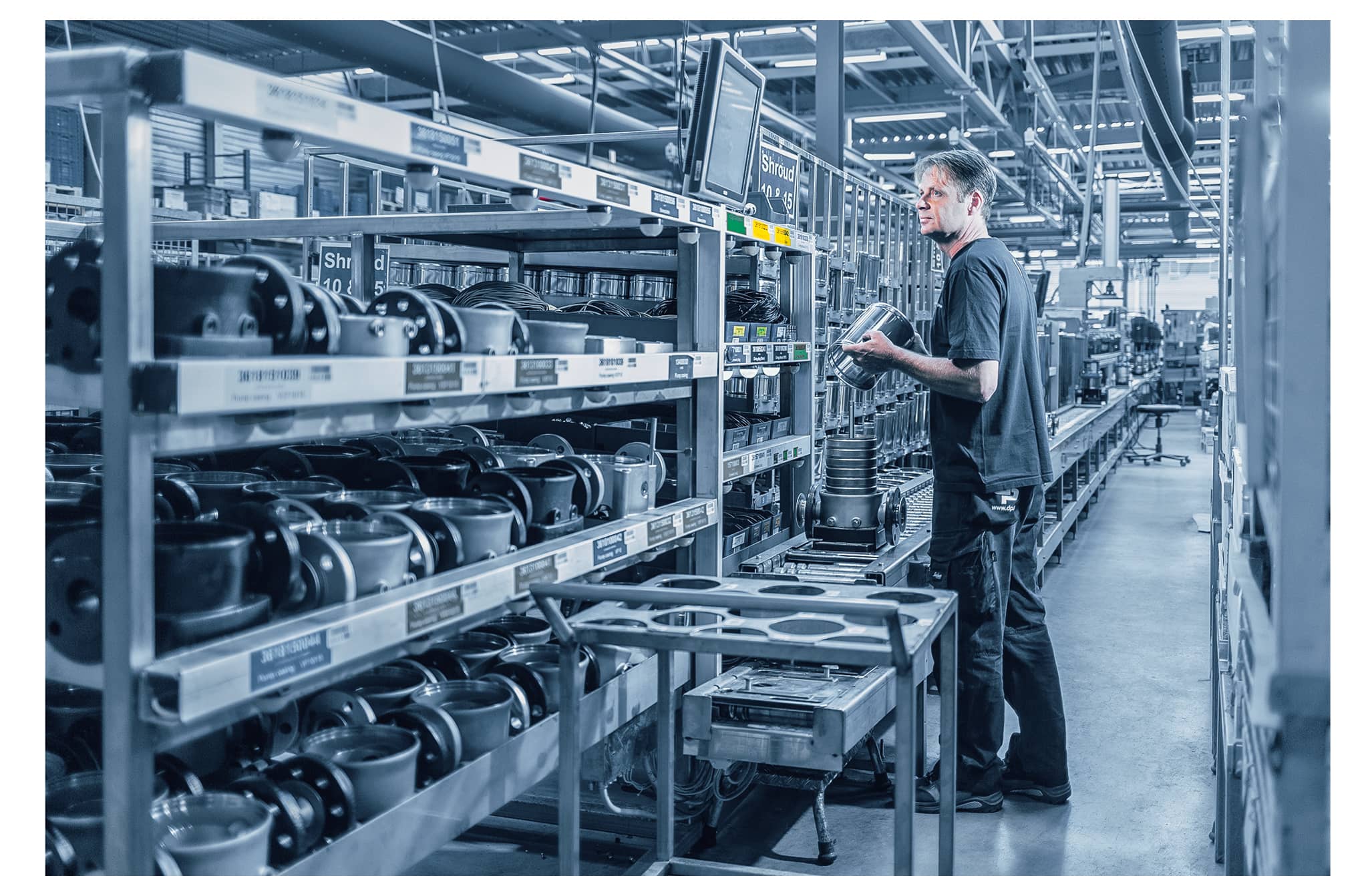Duijvelaar Pompen specializes in fabricating stainless steel centrifugal pumps and pumping installations. The company exports their pumps and pumping installations to a network of dealers in more than a hundred countries worldwide, with a production capacity of 100,000 pumps per year. Duijvelaar Pompen chose to digitize their assembly processes with a Manufacturing Execution System (MES) from Objective. By doing this, they achieved greater efficiency, higher quality and fewer errors.
Need for flexibility due to modular construction
In 2012, the search for a suitable MES solution started for Duijvelaar Pompen. This was not an easy task as the system had to be able to deal with the modular structure of the product. The difficulty was that most of the time MES tools are based on a unique product configuration code. In the case of Duijvelaar Pompen, this would mean that they would have to enter 11 million product configurations. So, having a solution that could be flexible was a definite must.
The Oracle ERP system that is used by Duijvelaar Pompen contains a CTO method (Configure To Order). In this method, the system configures the pump based on questions and answers. The MES application they were seeking had to be able to do the same for the instructions to the employees. The solution to these concerns was found with Objective.
Configure To Order method
With a production capacity of 100,000 pumps, it is necessary that this volume can be produced within minutes. In addition, it also requires several variants to be produced interchangeably on the assembly lines. The modular construction of the pumps ensures that they can be CTO assembled. In this way, customized work can be delivered, production can be carried out quickly and more than 11 million combinations are possible.
Based on predetermined criteria, the MES system determines the sequence of assembly. In this way, production can run efficiently. A rush order, for example, can be given priority over all other pumps. Only a technical change is needed in the planning. Then, the pump is prioritized by the system with no impact to the floor. This is because the real-time sequence can be changed. Because of this, it is possible to assemble and send a rush order on the same day that it was requested. And the rush order is completed with the same eye for detail and without any extra stress.
Chips and lights on the production floor
At the beginning of the assembly process, an RFID chip is linked to an order. This chip travels with the pump throughout the entire production process and is automatically scanned at each workstation. When it is scanned, the assembly worker receives instructions for assembling the pump via the MES system. In this way, he knows which parts he needs and whether there are specific customer requirements.
An important aspect within the assembly line is that the MES system also controls a pick-to-light system. Lights indicate which products an assembly worker must take in order to build the pump. This means that the operator is alerted visually to select the right product. The system also indicates when someone took the right or wrong product. In this way, the error margin is also reduced.
The RFID chip is mounted in a keychain on the product carrier. At the end of the production process it is disconnected and reset for the next order. The product carriers circulate internally, so that the RFID chips are continuously reused. As a result, RFID is a one-off investment that pays for itself quickly.
Paperless production
Before 2012, the assembly department worked with a paper list of parts and instructions to assemble the pumps. The work instructions had to be referenced in a quality book by an operator which resulted in the loss of valuable time. By opting for digitization, human errors were reduced, higher volumes were achieved and smaller custom lots were better supervised and the production time was shortened.
Since the implementation of Objective’s MES system, paper is no longer used in the factory. The assembly history is fully maintained by the system. For example, the test report and the specific batch information of purchased or produced components used are captured, so that in case of a production error the cause can be traced quickly.
MES and WMS: one integrated system
In 2016, Duijvelaar Pompen decided to deploy a Warehouse Management System (WMS) in addition to the MES in the factory. The WMS system puts the logistics employees to work optimally. The tasks are attuned to the production sequence and a picking task is only released when the assembly process is about to start. The logistic supply process follows the order of the assembly process. The WMS based solution was achieved at Objective, providing a great advantage, since both systems can be offered as one integrated system.



